The Indian textile and apparel industry employs around 45 million workers and contributes 11%-12% of the country’s exports. During FY22 (refers to the period April 01 to March 31), the size of Indian domestic textile and apparel industry is expected to be around USD 95 billion, while the export is expected to be around USD 38 billion.
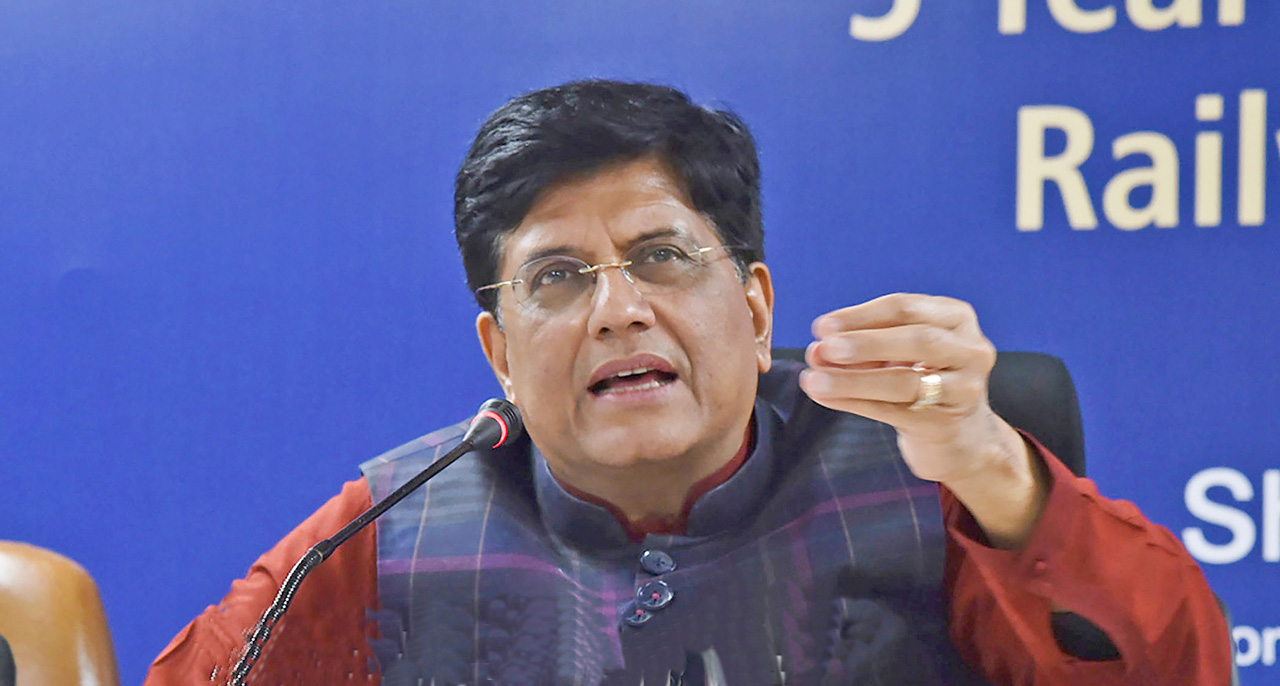
Despite presence across the textile value chain, India has not been able to garner China’s declining share in global readymade garment (RMG) exports in past few years. In order to boost textile exports, to generate employment and to create level-playing field for Indian exporters in global market, the Government of India (GoI) has already announced various incentives/ schemes and the PM Mega Integrated Textile Region and Apparel (PM MITRA) park is another step towards increasing competitiveness of Indian textile globally.
Announcement
An announcement was made by GoI for the setting up of seven PM MITRA parks with integrated facilities including plug and play infrastructure on land of over 1,000 acres with an aim to generate employment. Ten state governments, including Tamil Nadu, Punjab, Andhra Pradesh, Gujarat, Rajasthan, Madhya Pradesh, etc., have expressed their interest in the scheme.

The interested State Governments are required to provide at least 1,000 acres of land for the development of the park, and final selection of the location would be based on a challenge method and an objective criteria amongst states to have better infrastructure, connectivity and incentives for the textile park.
The Central Government will provide maximum Development Capital Support (DCS; @30% of the Project Cost) up to Rs.500 crore to each greenfield PM MITRA park and up to Rs.200 crore to each brownfield PM MITRA park.
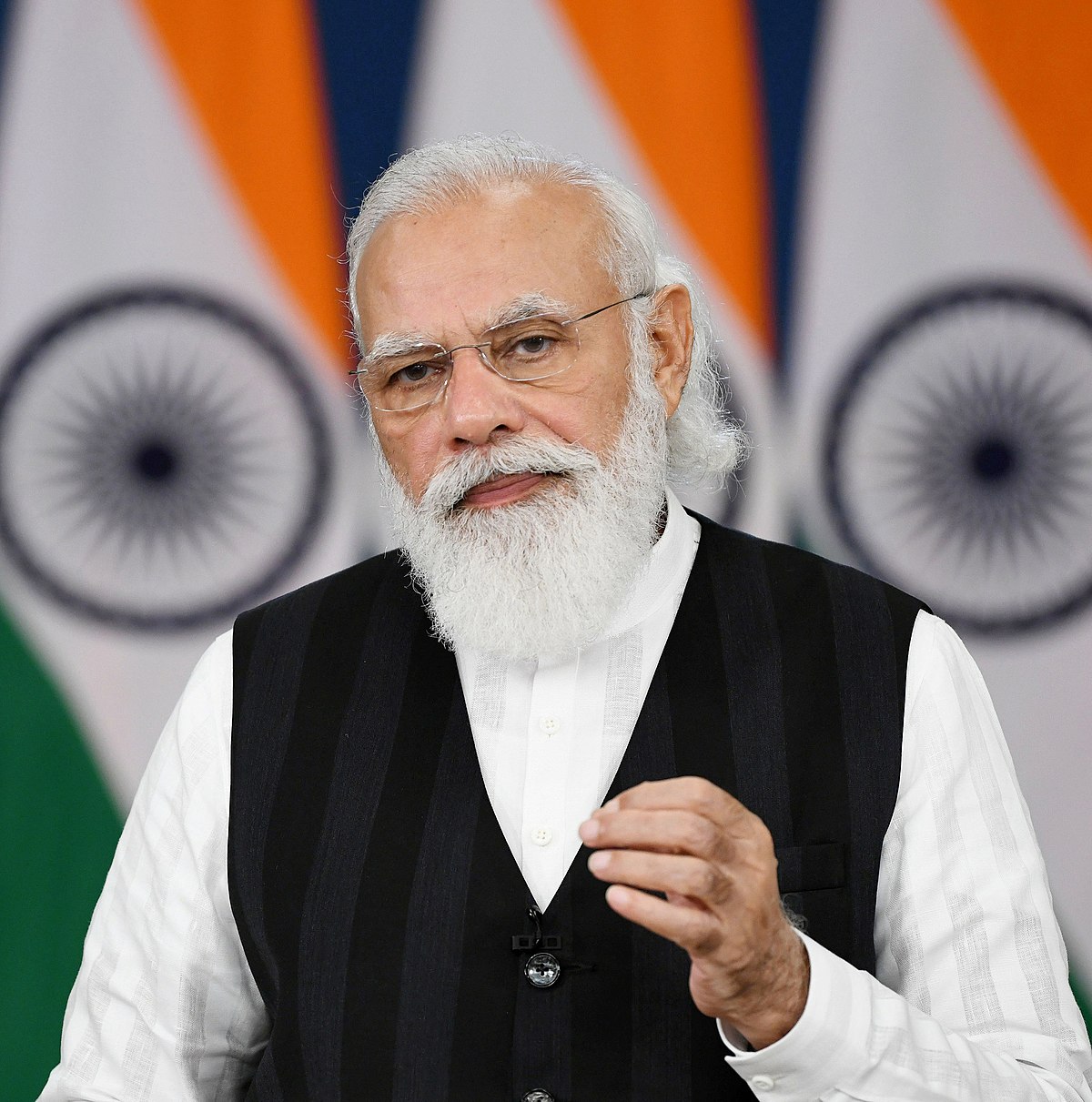
Moreover, the Central Government would also provide Rs.300 crore of competitiveness incentive support (CIS) to each PM MITRA park for early establishment of textile manufacturing units. Setting up of PM MITRA parks is based on the 5F vision of the Hon’ble Prime Minister – Farm to Fibre to Factory to Fashion to Foreign. Despite presence across the textile value chain, India is still far behind.
That is, exports of Readymade Garments (RMG) which has a very high potential to generate large employment, especially employment for women. The opportunity in RMG export is large given the declining share of China in the world RMG trade.
India’s share in global RMG export has remained stagnant over the past few years, while countries such as Bangladesh, Vietnam, and Cambodia have captured large part of China’s declining share in the global RMG exports. Competing nations have gained due to duty-free access to key export markets, i.e., USA and Europe apart from their higher labour productivity and economies of scale.
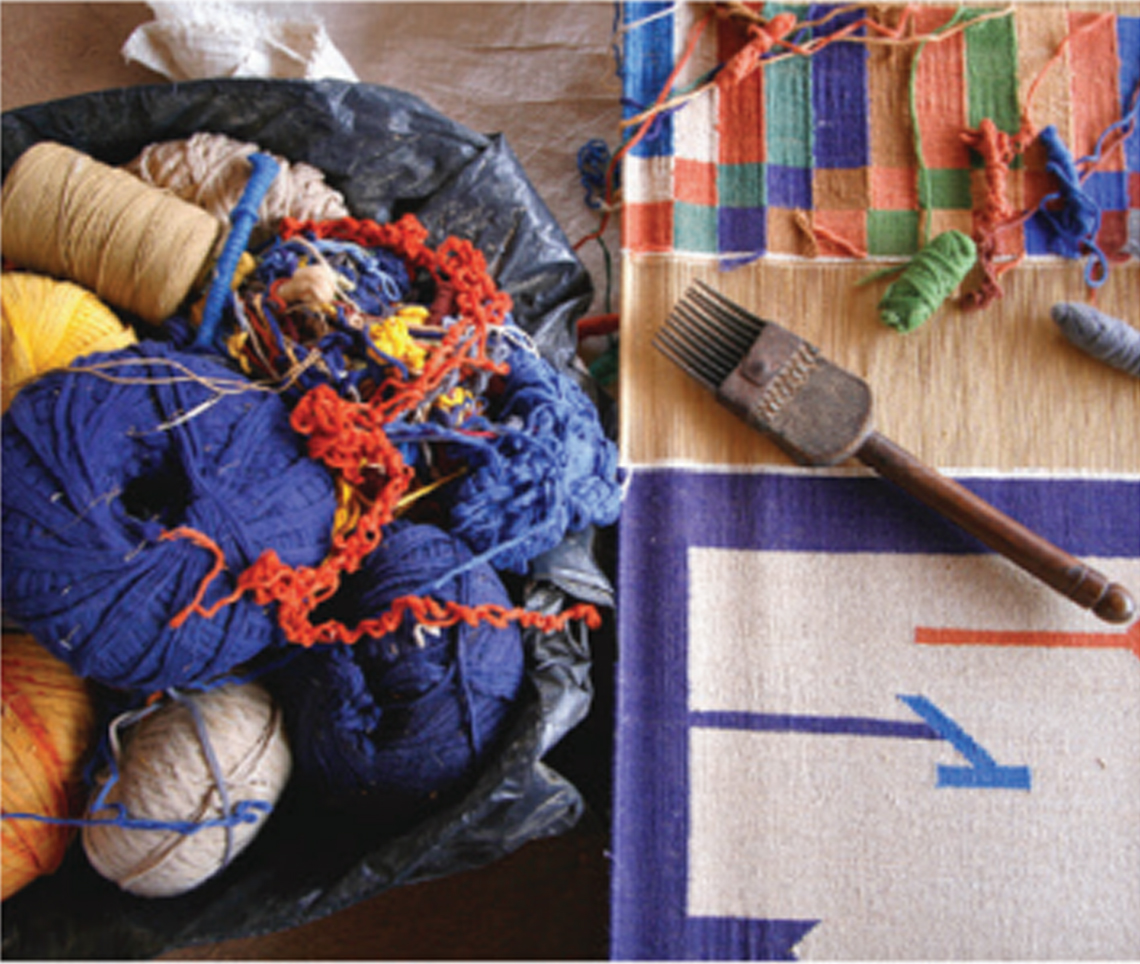
India has the distinct advantage of having adequate raw material and large labour workforce which shall augur well for grabbing the export opportunity. Furthermore, ready availability of raw material reduces transportation cost and lead time, thereby providing cost-effective solution to the customers.
Textile clusters provide large scale of operation, integrated value chain, support service, common infrastructure and fiscal incentives and thus reduces the cost of production. Along with the recent announcement of Remission of Duties and Taxes on Exported Products (RoDTEP) rate, extension of Rebate of State and Central Taxes and Levies (RoSCTL) scheme, Production Linked Incentive Scheme (PLI), the setting up of PM MITRA parks aims to further increase competitiveness of Indian textile players. Moreover, with steps being taken by leading global apparel brands to diversify their supply base as a part of their ‘China Plus One’ strategy, it is expected to augur well for additional investments in the Indian textile sector.
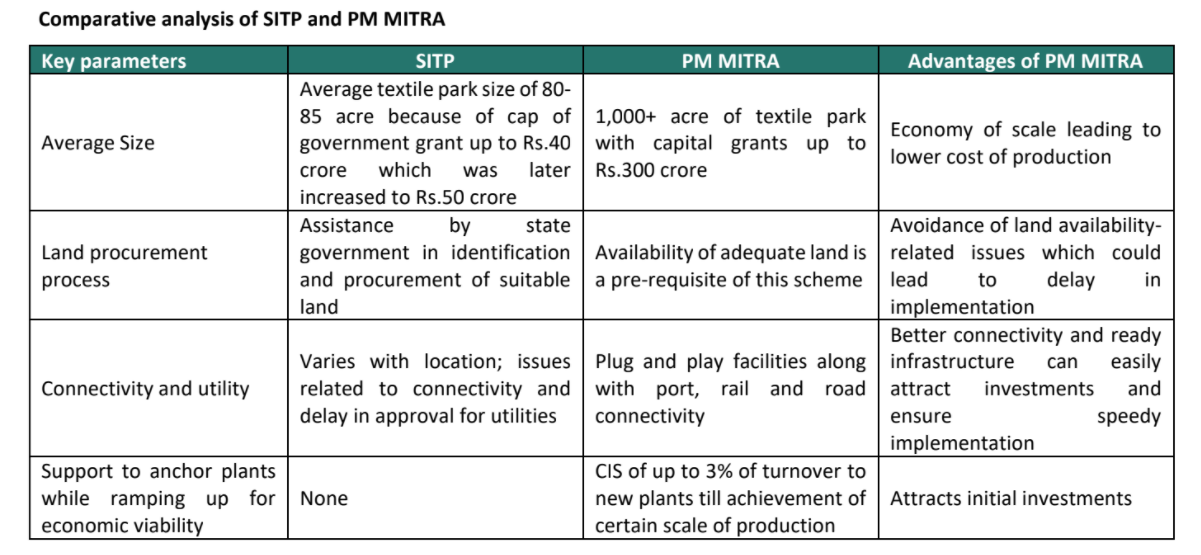

The Scheme for Integrated Textile Parks (SITP) was launched in FY06 to provide the industry with infrastructure facilities for setting up textile unit which was further extended till FY20. However, the scheme has not given intended results due to various issues and challenges. The GoI has now taken corrective steps while introducing PM MITRA scheme based on lessons learned from SITP.
Till date, 74 parks have been sanctioned under the SITP. Of the 56 textile parks sanctioned under SITP (excluding cancellation post sanction), only 22 are completed while the remaining are at various stages of implementation. Around 50% of the projects got cancelled due to delay in obtaining land and requisite clearance and approval, while around 25% got cancelled due to uncertain market condition.
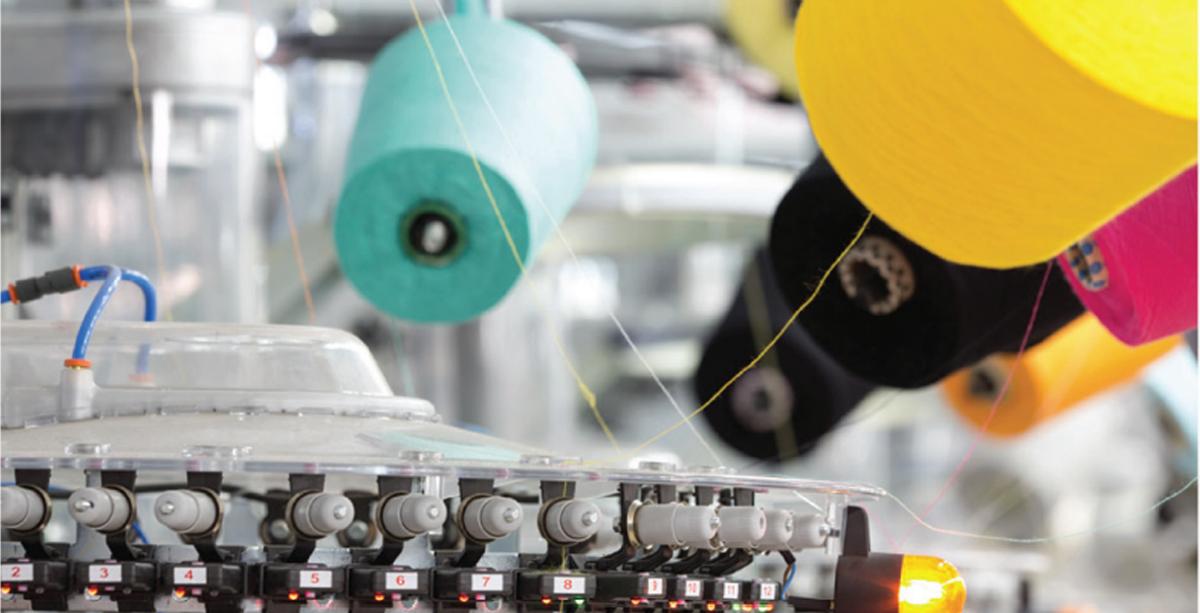
Lower size of textile park, lower-than-envisaged integration, poor rail, road and port connectivity, high lease rental and slow fund mobilization also posed challenges and led to lower occupancy rates. As depicted in the above table, the PM MITRA parks aim to overcome some of the shortcomings of SITP, thus having better chances of success. Moreover, current demand scenario, lower cost of borrowings and increase in ease of doing business during last few years can help to attract fresh investments. CARE Ratings sees relatively higher potential for investments, employment generation and exports under PM MITRA park, which is expected to benefit the textile sector.